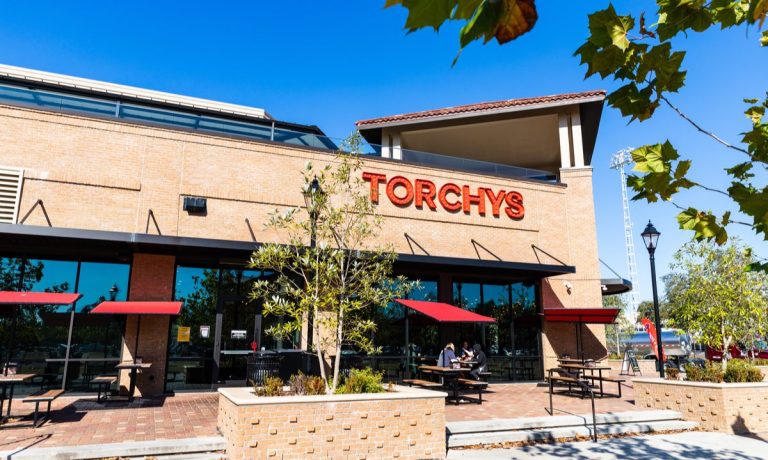
In early 2020, restaurant brands could stand out just by having a mobile loyalty program available to reward consumers for their spending. In 2021, with so many more programs in the market, brands began working harder to personalize their messaging and offers with data analytics. Now, some restaurants are finding ways to incentivize loyalty beyond the flat dollars-spent-to-points-earned transaction model.
For instance, Austin, Texas-based brand Torchy’s Tacos, which has 100 locations across 11 states, announced the launch of its rewards program earlier this month, offering surprise rewards that members cannot anticipate or control.
“We wanted to build a loyalty program that was not just points and punches — we wanted to build something that was fun and unique and different. So, the way we built it, it’s not a points-based system, but it’s more of a surprise and delight,” Torchy’s CMO Scott Hudler told PYMNTS in an interview. “The world’s not waiting for another loyalty program. What are you going to do — this is sounds cheesy, but — to earn their loyalty for your loyalty program?”
Torchy’s is not the only chain experimenting with new ways of building loyalty. Some chains, including fast-casual salad chain Sweetgreen and Mexican-inspired quick-service restaurant (QSR) chain Taco Bell have recently announced new subscription programs, while fast-casual brand Chipotle has been driving engagement with gamified rewards.
See also: Taco Bell Rolls Out ‘Taco Lover’s Pass’ Nationwide as Restaurant Subscriptions See Mixed Results
Chipotle: Brands Can Drive Loyalty Without Bearing the Cost of Freebies or Discounts
Give the People What They Want
Loyalty programs can go a long way towards driving spending, especially for consumers on the younger side, according to data from PYMNTS’ study, The Digital Divide Report: Minding The Loyalty Gap, created in collaboration with Paytronix, which featured the results of a census-balanced survey of more than 2,400 U.S. adults about their restaurant habits. The study found that more than half of consumers in their early forties and below use loyalty programs, and that share jumps to about six in 10 for Gen Zers.
Read more: Restaurants Compete to Make Loyalty Programs Stand Out as Consumers Join Multiple Programs
Additionally, the study found that rewards programs are the single most in-demand digital feature that consumers say would encourage them more than any other to make more restaurant purchases, ranking ahead of online ordering ability, drive-thru pickup, and fast lane pickup.
Not only do such programs boost brands’ sales — consumers expect them.
“Having a loyalty program was something that was definitely top of mind with our guests — they’ve been asking for a while,” said Hudler. “The engagement and the receptivity to a rewards program by our guests has been really overwhelming.”
The Novelty/Control Tradeoff
While the surprise-and-delight model sets the program apart, it could have drawbacks for consumers who are looking to take their restaurant experiences into their own hands, as many are. So far, Hudler noted, it has not been an issue.
“That specific want our desire to control it? … It’s early days, but so far we have not seen that,” he said.
Certainly, consumers who are members of multiple loyalty programs may be open to the novelty of engaging with one with a less traditional rewards structure. Research from the Minding the Loyalty Gap report found that 70% of consumers who are members of QSR loyalty program engage with three or more loyalty programs, and 25% of them use loyalty programs at all or almost all of the QSRs they purchase from often.
Still, it seems unlikely that consumers would want more of their loyalty to programs to follow a similar model, given that, industry-wide, there is a trend toward self-guided experiences. Increasingly, restaurant customers are opting for own-device ordering channels, a wide range of payment options and omnichannel fulfillment. With this growing expectation for choose-your-own-adventure flexibility, it seems likely that the mindset may extend to loyalty offerings.
Order Up
Consumers are not the only ones looking to take control of the ordering experience into their own hands — restaurants are in a similar position relative to third-party delivery marketplaces. Over the course of 2022, Hudler expects improvements across the restaurant industry to digital order fulfillment capabilities.
“We love our partners at DoorDash, but the economics of it are pretty — everyone kind of knows what they are,” said Hudler. “I think any interesting things that can be done there to help for self-delivery on the last mile are super intriguing.”
In addition to improving the delivery experience for restaurants, he predicts that tech innovations this year will also improve the on-premises ordering experience for restaurants and consumers alike, at least for those seeking speed and convenience. Soon, he predicts that in-restaurant dining will be almost as digitized as the takeout experience.
“The centuries-old way of ordering and restaurants where you come up and you order, or someone comes to your table and takes your order and then brings food — is there a way to get rid of that stuff, and it can be on your phone?” he said. “A lot of places are starting to look at this, we’re starting to explore — can you … change that flow?”